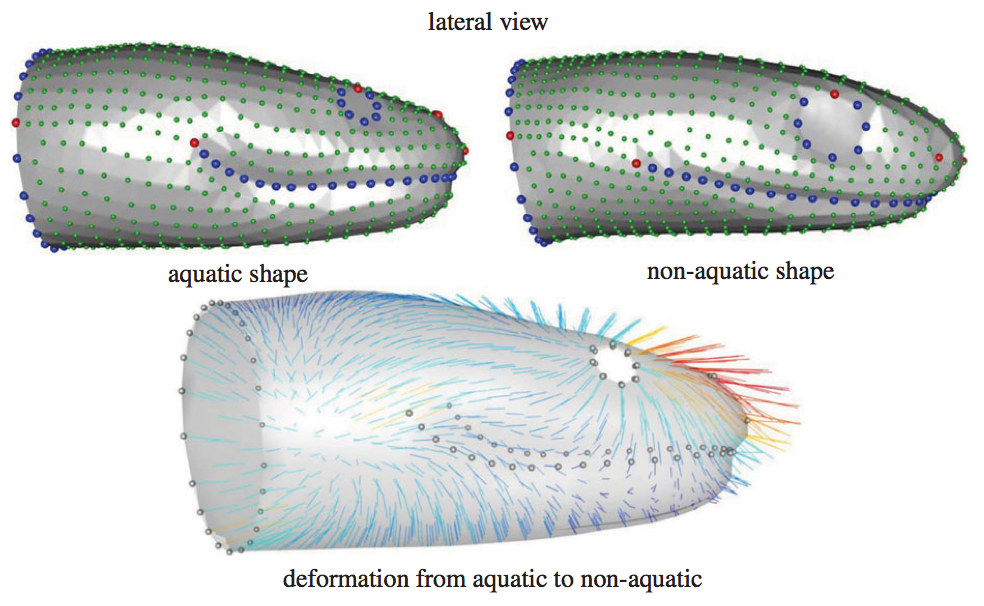 Does aquatic foraging impact head shape evolution in snakes ?
Does aquatic foraging impact head shape evolution in snakes ?
M. Segall, R. Cornette, A-C. Fabre, R. Godoy-Diana & A. Herrel
Proceedings of the Royal Society B 283 20161645 (2016).
[doi:10.1098/rspb.2016.1645] 
Evolutionary trajectories are often biased by developmental and historical factors. However, environmental factors can also impose constraints on the evolutionary trajectories of organisms leading to convergence of morphology in similar ecological contexts. The physical properties of water impose strong constraints on aquatic feeding animals by generating pressure waves that can alert prey and potentially push them away from the mouth. These hydrodynamic constraints have resulted in the independent evolution of suction feeding in most groups of secondarily aquatic tetrapods. Despite the fact that snakes cannot use suction, they have invaded the aquatic milieu many times independently. Here, we test whether the aquatic environment has constrained head
shape evolution in snakes and whether shape converges on that predicted by biomechanical models. To do so, we used three-dimensional geometric morphometrics and comparative, phylogenetically informed analyses on a large sample of aquatic snake species. Our results show that aquatic snakes partially conform to our predictions and have a narrower anterior part of the head and dorsally positioned eyes and nostrils. This morphology is observed, irrespective of the phylogenetic relationships among species, suggesting that the aquatic environment does indeed drive the evolution of head shape in snakes, thus biasing the evolutionary trajectory of this group of animals.
BibTeX:
@article{Segall:2016,
author = {Segall, Marion and Cornette, Rapha{\"e}l and Fabre, Anne-Claire and Godoy-Diana, Ramiro and Herrel, Anthony},
title = {{Does aquatic foraging impact head shape evolution in snakes?}},
year = {2016},
month = aug,
url = {http://dx.doi.org/10.1098/rspb.2016.1645},
journal = {Proceedings of the Royal Society B},
volume = {283},
pages = {20161645}
}
Article in the publisher site: [doi:10.1098/rspb.2016.1645]
Article here: [PDF file]